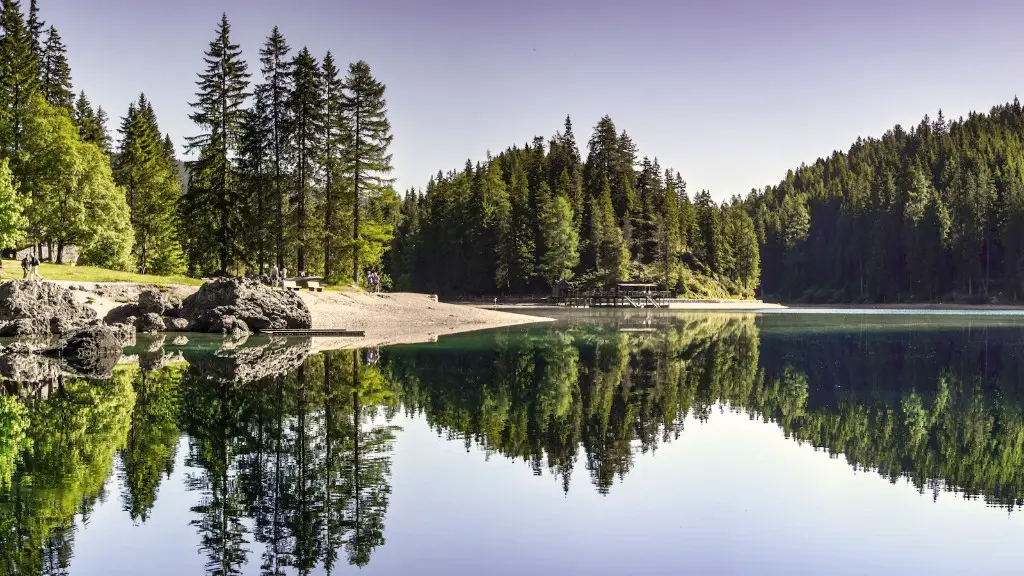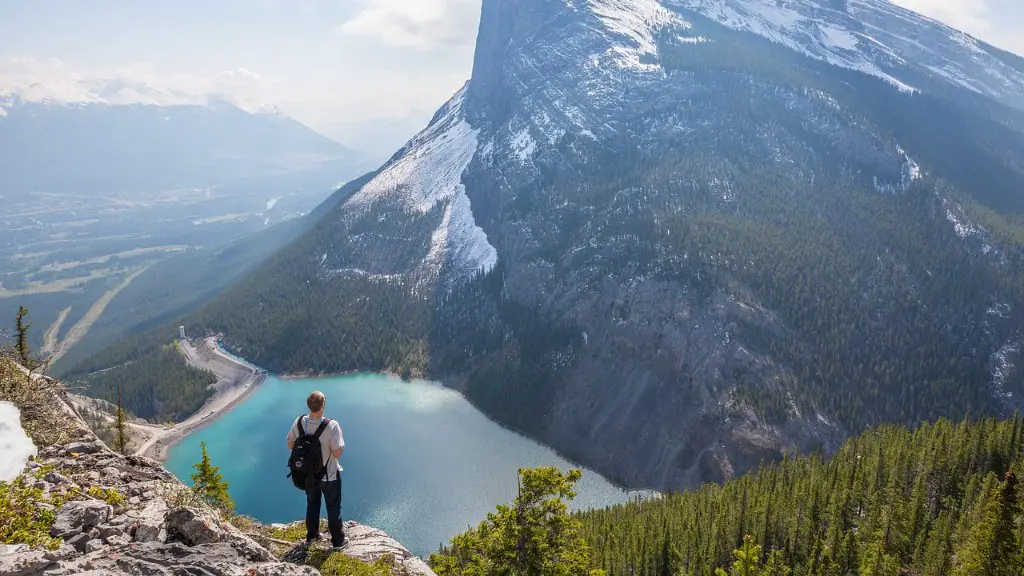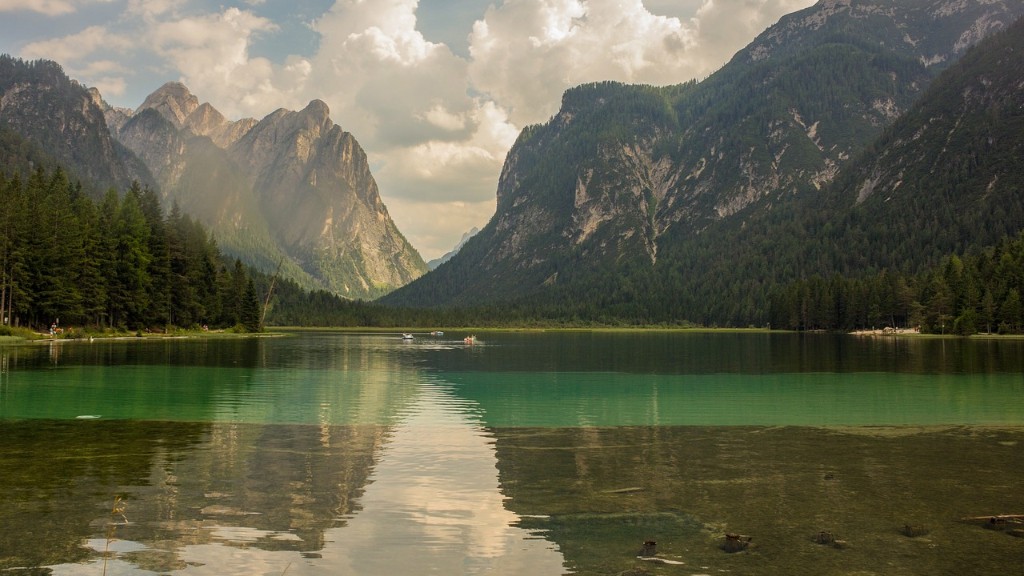Lake Victoria:Location and Landscape
Lake Victoria, located in East Africa, is the largest tropical lake in the world. It is bordered by Kenya, Tanzania, and Uganda and is home to many different species of animals and plants, some of which are completely unique to the region. Lake Victoria was discovered in the mid-19th century and named after Queen Victoria, who reigned at the time. The lake is sometimes referred to as the ‘Jewel of Africa’ due to its beauty and biodiversity.
The lake is located on the border of Uganda, Kenya, and Tanzania, at an elevation of 1,132 meters. It covers an area of nearly 187,000 square kilometers, making it the world’s second largest inland lake and the largest tropical lake on the planet. It has many tributaries that feed it and its waters are shared between the three countries. The lake also has several major submerged landscapes, with some of the deepest points reaching a maximum of 82 meters. It’s estimated that the lake is estimated to be at least 25 million years old, making it one of the oldest bodies of water on Earth.
Ecosystem of Lake Victoria
The lake is home to an incredibly rich and diverse ecology, with more than 500 fish species as well as many other forms of aquatic life. The lake also supports more than 3,000 plant species, many of them rare and threatened. It’s also home to more than 200 bird species, most of which are migratory.
The lake is an important provider of food and nutrition for the people who live in the region. Its fish are eaten by a variety of different communities and its waters are used to irrigate crops. It’s also important to the region’s tourism industry, with resorts, lodges, and national parks located all around the lake.
Threats to Lake Victoria
Unfortunately, the lake is facing a range of threats from humans and from nature. Pollution from agricultural runoff, sewage, and industrial wastewater is a major problem, causing eutrophication and destroying the natural balance of the lake. The introduction of foreign species of fish, especially the Nile perch, has also had a negative effect on the lake’s ecosystem by pushing out the lake’s native fish and disrupting the balance of the lake’s ecology. Another major challenge is overfishing, which has led to severe declines in fish populations.
The lake is also facing significant changes in its water levels due to climate change. The lake has been shrinking since the 1950s, with water levels falling by 1.5 meters per year. This has been caused by a combination of decreased rainfall and increased water extraction for agricultural purposes.
Conservation Efforts
Fortunately, conservation efforts are underway to protect the lake and its biodiversity. In recent years, the governments of Kenya, Uganda, and Tanzania have taken steps to reduce pollution and to protect migratory species. They have also imposed strict regulations on fishing, with a strict ban on the use of gillnets.
In addition, several NGOs are working to conserve the lake’s biodiversity and to improve the livelihoods of the people who depend on the lake. These efforts include education programs, as well as projects to plant trees, create habitats for birds, and restore shorelines to help protect the lake and its ecology.
Sustainable Development and Tourism
In recent years, sustainable development and tourism have become increasingly important for Lake Victoria. Sustainable development efforts are focused on promoting renewable energy sources, reducing pollution, and conserving biodiversity. Meanwhile, tourism is providing jobs and helping to boost the economies of the local communities in the region. In this way, sustainable development and tourism can work together to protect Lake Victoria and its environment.
The Impact of Lake Victoria
Lake Victoria has a major impact on the countries it touches and on the wider world. It is an important source of food, providing sustenance for millions of people who live in the region. It is also important for the region’s economy, providing jobs and stimulating economic growth. Finally, the lake is an important symbol of Africa, with its beautiful landscape, diverse wildlife, and vibrant cultures.
Strategies for Protecting Lake Victoria
The governments of Kenya, Uganda, and Tanzania have taken important steps to protect Lake Victoria and its environment. These countries are working to reduce pollution, develop renewable energy sources, and enforce fishing regulations. In addition, NGOs and other organizations are working to restore habitats, create educational programs, and improve the livelihoods of those who depend on the lake.
The Future of Lake Victoria
The future of Lake Victoria is uncertain, but with the help of conservation efforts, sustainable development, and tourism, there is still hope for its protection. With the right strategies in place, the lake can remain a source of food, a symbol of African beauty, and an engine of economic growth for the countries that surround it.
Role of International Community
The international community has a key role to play in protecting Lake Victoria. International organizations such as the United Nations and the World Bank have been supporting conservation efforts in the region and providing funding for projects to protect the lake. These efforts are essential for protecting Lake Victoria and its unique biodiversity.
Global Collaboration
Protecting Lake Victoria requires global collaboration and partnership. All three countries that share its waters must continue to work together and with the international community to ensure that the lake is protected and its resources are used in a sustainable way. By working together, they can ensure that this vital resource will remain a source of food and economic growth, as well as a symbol of African beauty, for generations to come.


